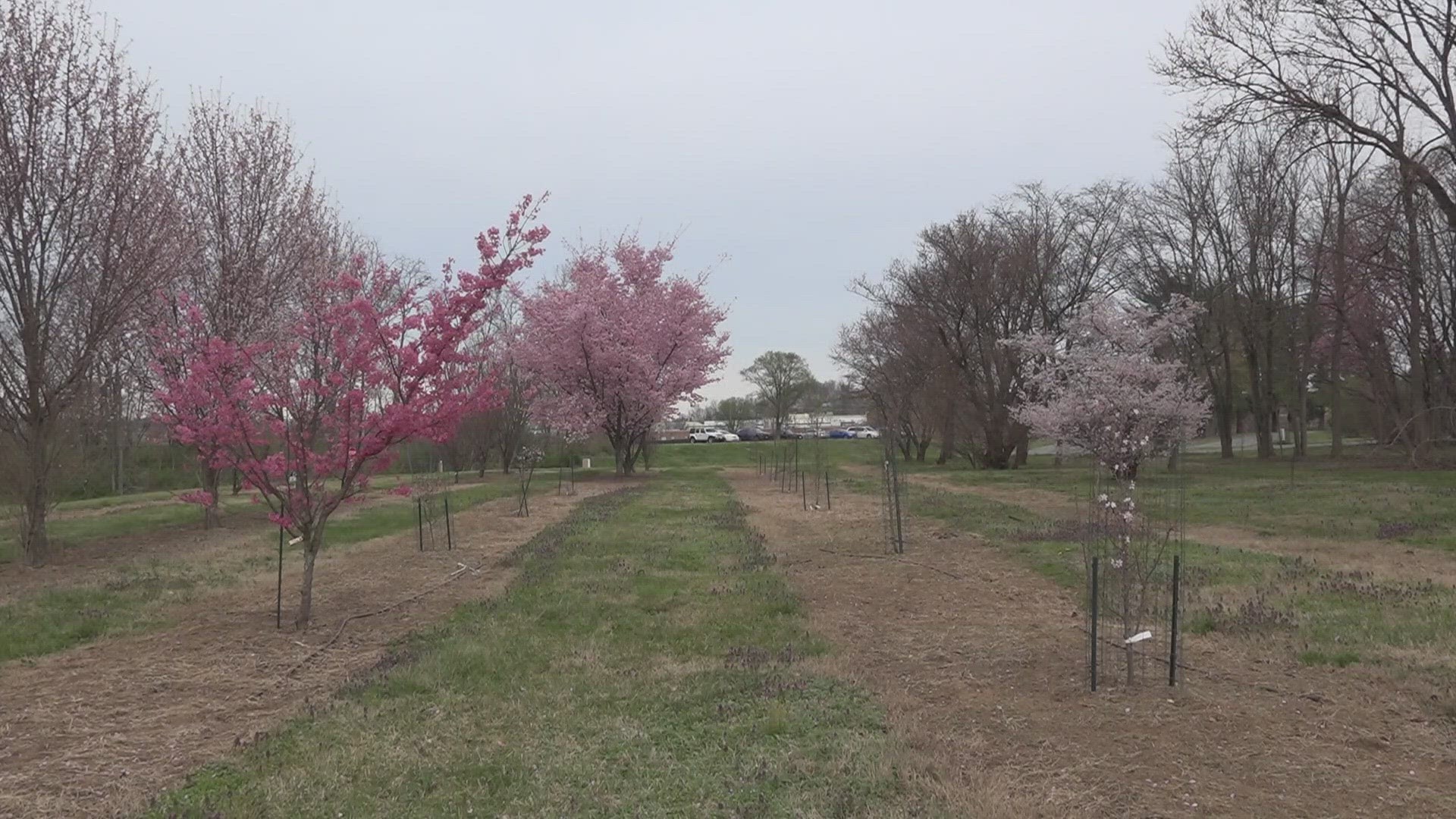WASHINGTON — Sprawled across more than 450 acres, you don't have to be shoulder-to-shoulder with other people to see the cherry blossom trees. On one weekday it was so quiet that you could hear the birds chirp and get close enough to a cherry blossom tree to see bees happily buzzing around the petals. This other home to more than 900 flowering cherry trees is at the National Arboretum.
Dr. Margaret Pooler is a research scientist at the U.S. National Arboretum.
"The Tidal Basin has a peak bloom and if you miss it, you kind of miss it," Pooler said. "So if you're from out of town and you can't get here at that time, all is not lost. You can come to the National Arboretum."
The National Arboretum is home to more than 900 individual flowering cherry trees, according to Pooler.
"And the good thing is, they bloom at different times. We have some here that have already finished blooming, the really early ones. We have a lot that are in full bloom right now and some that haven't even started, so you're not too late," Pooler said. "Our cherry trees bloom at different times because of the genetic diversity."
The cherry blossom trees at the National Arboretum typically bloom from March to mid- to-late April, depending on the weather.
Hanami is the Japanese word for "cherry blossom viewing". Visitors can go on a self-guided tour, called Beyond The Tidal Basin, to see cherry blossoms around the arboretum at 40 different sites. There's a brochure to explain more about the different types of cherry blossom trees.
RELATED: DC students design and paint Nike Air Force 1s in celebration of this year's Cherry Blossoms
Families walking around taking photos and making memories may have not realized that they were actually walking around a research field. Some of the cherry blossom trees have metal tags on them.
"So we're working on breeding and developing new varieties of flowering cherries," said Pooler. She said the purpose of the research is to help trees adapt to environmental stressors such as air pollution and surviving in warmer or cooler climates. Researchers also monitor characteristics of the bark and how the trees perform with soil compaction, Pooler explained.
Walking on a tour visitors may notices some differences in color with the cultivated cherry blossom trees in the research field. Some have larger petals, or lighter petals and some have really dark pink hues.
"Here is one of our hybrids that we cultivated in our research field," Pooler pointed out to a WUSA9 crew. "If you look closer you can see the petals, they're pink, but there's also white. So it's almost like a water color effect."
WUSA9 asked Pooler if scientist could make the bloom last longer.
"We can work a little bit on lasting the bloom," she said with a laugh. "But really if you think about it, one of the things that makes cherry trees so special is the fact tat their bloom is so short. It just kind of makes you stop and really be in the moment and enjoy them."
Surrounded in the beauty of the cherry trees to the sounds of the birds chirping, the lesson was clear: live in the moment. Make the memory.

